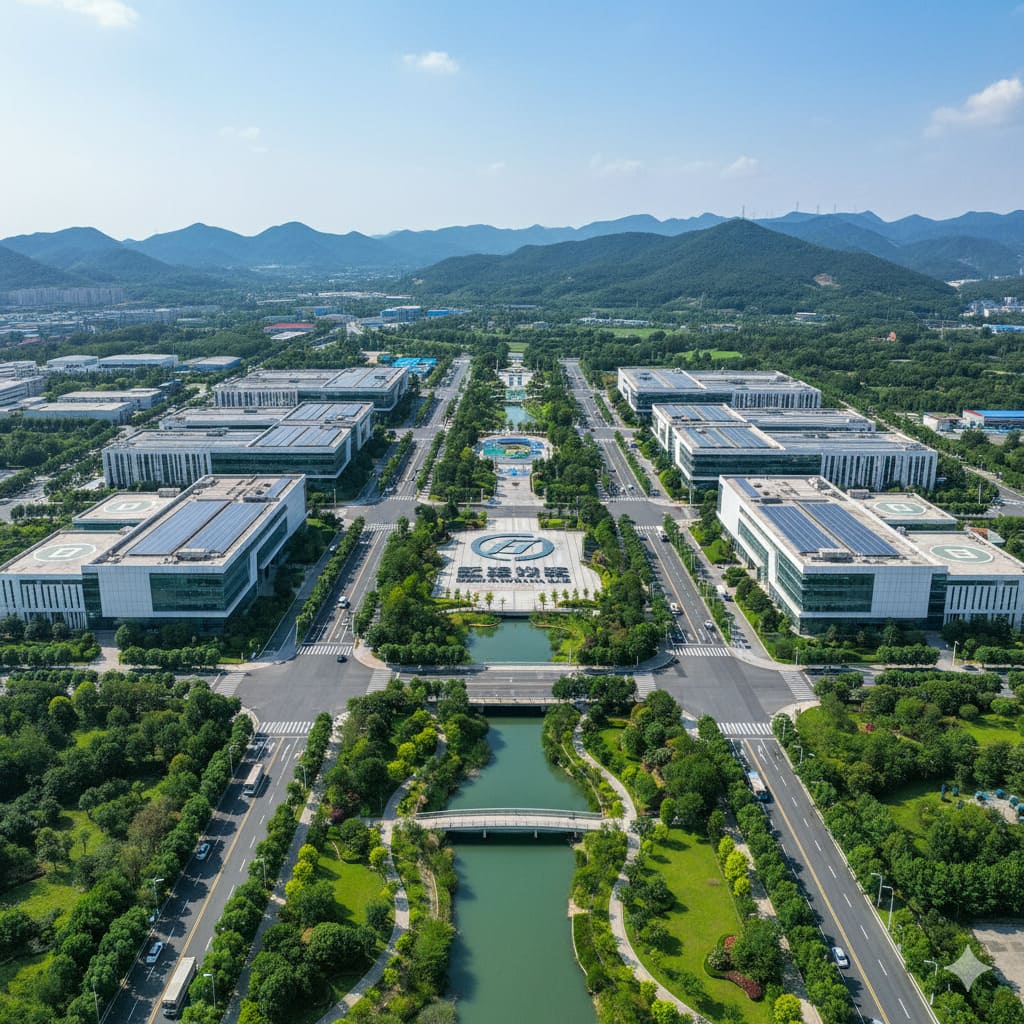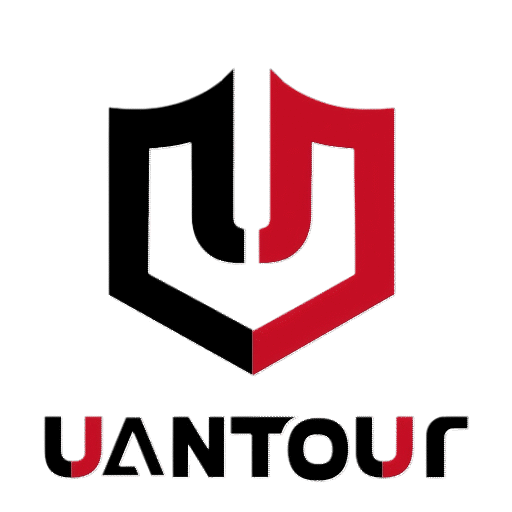Choosing a supplier in China feels like a gamble. You worry about poor quality and unreliable partners, which can damage your reputation. Let's find a partner a trustworthy partner.
To choose the right Chinese supplier, first identify the key industrial clusters1 like Zhejiang. Then, match your brand's quality and price positioning with a factory that meets those specific needs and holds essential certifications like IATF 169492.

When we started Uantour in 2015, I saw many international buyers make the same mistakes. They would either focus only on the lowest price or get overwhelmed by the sheer number of factories. But after 30 years of development, China's auto parts industry has become highly specialized. The secret isn't just finding a good factory; it's about finding the right factory for you, in the right region. Understanding this landscape is the first step to building a secure and successful supply chain3.
How is China's auto chassis and suspension industry chain distributed?
China is massive, and factories are everywhere. How can you possibly know where the best suppliers for chassis parts4 are located? It's confusing and can waste a lot of time.
China's chassis and suspension industry is concentrated in regional clusters, primarily in Zhejiang, Fujian, and Hebei. Each region has developed unique strengths over the past 30 years, from high-end manufacturing in Zhejiang to more specialized or cost-effective options elsewhere.
For the last three decades, China's private auto parts sector has grown into a global powerhouse. But this growth didn't happen uniformly. It concentrated in specific areas, creating powerful industrial clusters1. Think of these clusters like specialized cities for auto parts. For buyers, this is great news. It means you can target your search to a region that aligns with your needs. The most prominent hub is Zhejiang province, where Uantour is based. It's known for its early development and high-quality standards. Other important areas include Fujian and Hebei. Each of these regions has a different ecosystem of factories, raw material suppliers, and logistics networks5. Knowing the difference between them is crucial before you even start talking to individual suppliers. It helps narrow your search and sets you up for a much more efficient sourcing process.
Major Chinese Auto Parts Clusters
| Region | Key Characteristics | Best For |
|---|---|---|
| Zhejiang | Advanced manufacturing (Industry 3.06), strong OEM experience7, premium quality. | Buyers seeking high quality and reliability. |
| Fujian | Often specializes in specific components and materials, good infrastructure. | Buyers looking for particular part types. |
| Hebei | Proximity to steel industries, often more cost-competitive. | Buyers focused on standard parts and price. |
What are the strengths of the major industry clusters?
You know the main regions now, but they still sound similar. How do you decide if Zhejiang is better than Hebei for your business? Making the wrong choice can lead to a mismatch.
Zhejiang stands out as the premium cluster, where top factories have reached Industry 3.06 standards. They have extensive experience as OEM suppliers for world-class brands, ensuring excellent quality, advanced technology, and stable delivery schedules for global partners.
Let's dive deeper into Zhejiang, because it truly represents the best of China's manufacturing evolution. I've spent my entire career here, and I've witnessed the transformation firsthand. The leading factories in this region, including our own manufacturing partners, have moved far beyond simple production. They have embraced Industry 3.06 principles, meaning automated production lines, rigorous data-driven quality control, and highly efficient processes. Many of these factories are Tier-1 or Tier-2 suppliers to major global car brands. This OEM experience7 is a game-changer. It means they don't just know how to make a part; they know how to make a part that meets the most demanding safety and performance standards in the world. This is why our brand, Uantour, is proudly rooted in Ningbo, Zhejiang. We leverage this ecosystem to provide our clients with products they can trust completely.
How do you choose a partner that fits your brand?
You've found some high-quality factories in Zhejiang. But their prices and minimum order quantities vary. How do you select the one that is the perfect match for your specific business needs?
First, clearly define your brand's market position8: are you premium, mid-range, or economy? Then, search for a supplier whose quality level, production scale9, and pricing structure directly align with that identity. A mismatch here will cause problems later.
This is the most critical step, and it's one I always discuss with new clients. A supplier is not just a vendor; they are a partner in your brand's promise to your customers. Before you contact any factory, you must be honest about your own business. Who are your customers? What do they expect? If you sell premium, high-performance parts, you need a partner with OEM experience7 and top-tier certifications, and you should expect to pay for that quality. If you serve a more price-sensitive, mid-range market, you need a factory that offers a great balance of quality and value. Don't try to force a premium factory to meet an economy price point, or expect an economy-focused factory to deliver OEM-level innovation. A successful partnership happens when both sides are aligned on goals. Be clear about your identity first, and your search for the right partner will become much simpler.
Matching Supplier to Your Brand
| Your Brand Position | Supplier's Focus | Key Indicators to Look For |
|---|---|---|
| Premium / OE-Quality | Quality, Innovation, R&D | IATF 169492, CNAS10 Lab, OEM supplier history |
| Mid-Range / Value | Balance of Quality & Cost | Strong QC processes, wide product range |
| Economy / Price-Focused | High Volume, Cost-Efficiency | Large production capacity11, competitive pricing |
What are the basic requirements for a qualified factory?
You have a potential partner in mind. Their brand seems to fit yours. But how do you confirm they are truly qualified? A good website can hide many operational weaknesses.
A qualified factory must have a certified quality management system12, like IATF 169492. They should also possess in-house testing facilities13, a transparent and well-managed production process, and a proven history of stable exports to global clients.
2 being displayed" title="[IATF 16949](https://www.nsf.org/management-systems/quality-management/iatf-16949-2016)2 Certification" />
After you've aligned on strategy, it's time to verify the fundamentals. These are the non-negotiables. First, always ask for their IATF 169492 certificate. This is the global standard for quality in the auto industry, and any serious supplier must have it. Second, look for evidence of their own testing capabilities. At Uantour, our partners have their own CNAS10-accredited labs. This means they can perform fatigue, material, and performance tests on-site, ensuring quality is built-in, not just inspected at the end. Third, they should be able to provide clear insight into their production lines and warehousing. For example, our 7,000㎡ modern logistics center allows us to maintain a large inventory and respond quickly to orders. A reliable partner is always proud to show you their operations, because it's the foundation of the quality they promise.
Conclusion
Choosing the right supplier means matching your brand's unique needs with a factory's specific strengths, especially its commitment to quality and its position within China's specialized industrial clusters1.
References
Discover how industrial clusters enhance manufacturing efficiency and quality, particularly in auto parts. ↩
Learn about IATF 16949 certification, a crucial quality standard for auto parts suppliers, ensuring reliability and excellence. ↩
Learn strategies for establishing a reliable supply chain in China, crucial for business success. ↩
Find out the top regions in China for sourcing high-quality chassis parts, saving you time and effort. ↩
Learn how efficient logistics networks enhance supplier performance and responsiveness to orders. ↩
Learn about Industry 3.0 principles and how they revolutionize manufacturing processes and quality. ↩
Understand the significance of OEM experience in ensuring that suppliers meet high safety and performance standards. ↩
Get tips on accurately defining your brand's market position to find the right supplier match. ↩
Discover the importance of aligning production scale with your business needs for effective partnerships. ↩
Understanding CNAS certification is crucial for ensuring your supplier meets quality standards, enhancing your supply chain's reliability. ↩
Understand how a supplier's production capacity can influence your business's success and scalability. ↩
Understand the essentials of a certified quality management system, vital for ensuring supplier reliability. ↩
Explore the benefits of suppliers having in-house testing facilities for maintaining product quality. ↩
